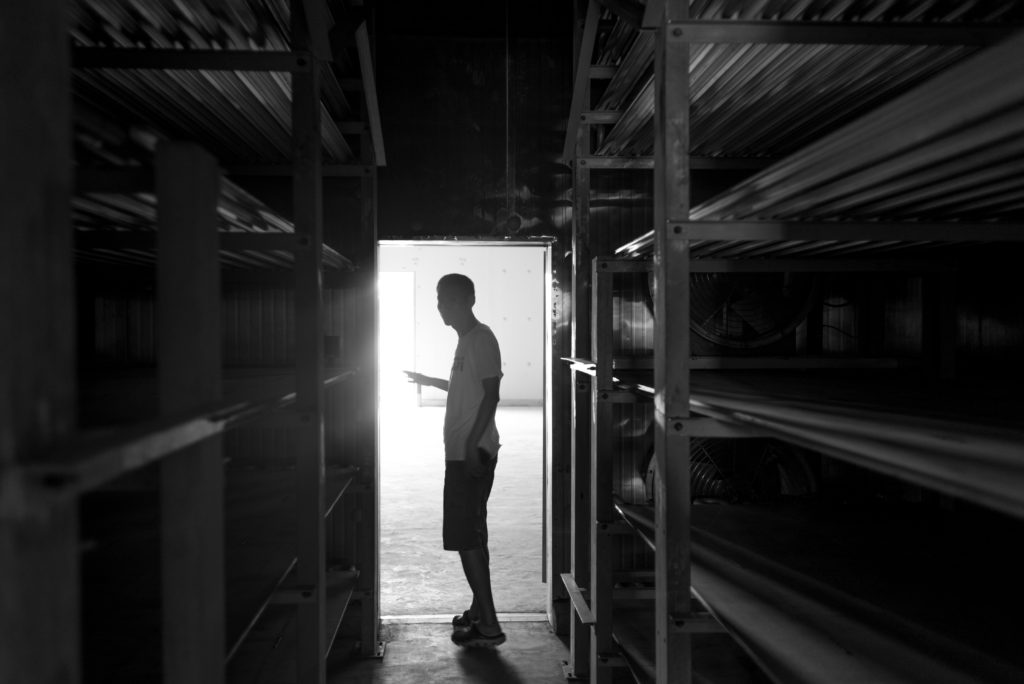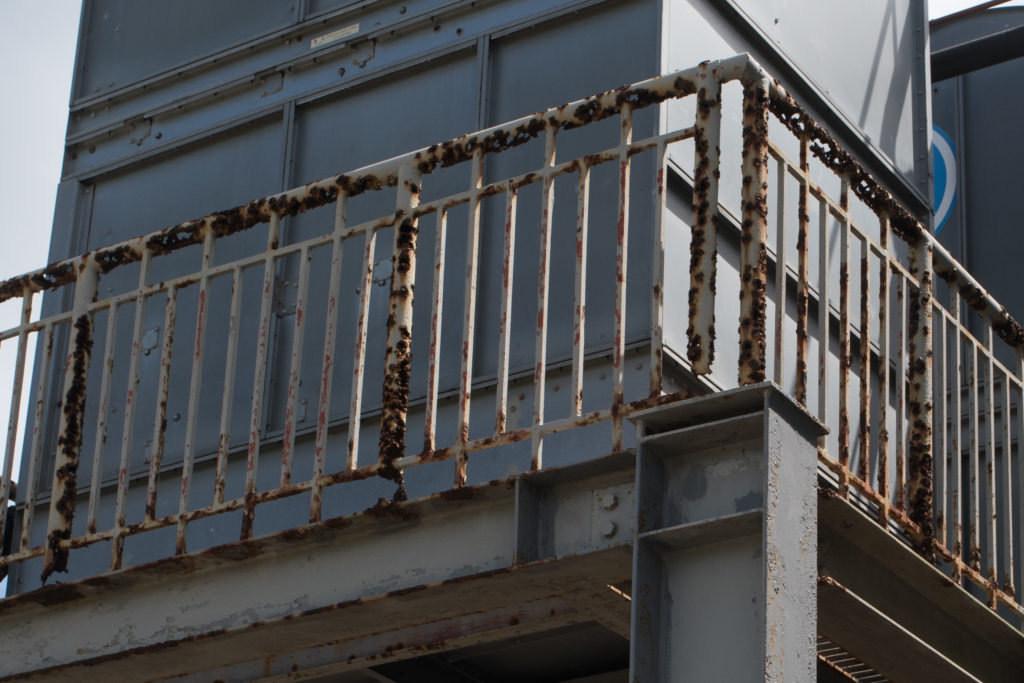The Sino-Van Fisheries Ltd fish sorting plant in Blacksand has drawn the ire of countless local residents. Many of the fears expressed are ungrounded in fact.
Will it stink? Yes. Will it destroy the foreshore ecology from Blacksand to Devil’s Point? Not even in the worst-case scenario. Will it draw sharks? No. Will long-liners drag their anchors across the international internet cable? No. Will innumerable decrepit long-liners crowd Vila Bay? No. Will these vessels pollute the bay? Yes, but no worse than cruise ships and domestic transports already do.
None of that is to say that we shouldn’t be worried. We just need to draw a clear line between outright NIMBY-ism and legitimate concern.
The Daily Post toured the fish plant last week and spoke at length with company officials. The parent company, CNFC Overseas Fishery Co. Ltd, which holds a 51% controlling interest in the joint venture, operates a fleet of 40 long-liner ships in Vanuatu and Solomon Islands territorial waters. So far, they have been offloading in Suva.
A typical long-liner returns to port to offload every 1.5 – 2 months. Turn-around time in port is seldom more than 48 hours. At current levels of operation, this would mean about 320 fishing boat arrivals in Port Vila every year. We would rarely see more than four vessels in harbour at any time. The average number would be one or two.
A company spokesman said that captains would simply extend their cruise if there were a backlog in port.
Each long-liner holds a catch weighing between 20-40 tonnes. The vast majority of that is albacore, the most common source of tinned tuna. Another 10% or so is high quality—and high priced—Yellowfin and Bigeye tuna, much sought after in gourmet markets. A final 10% is by-catch—that is, mahi mahi, wahoo and the like, a total of about 10 species whose feeding habits are the same as tuna.
All fish are gilled and gutted immediately after capture, and most are immediately frozen at -25C. If the ship is approaching the end of its cruise period, some of the choicer fish are kept fresh for sale at auction in Japan and the US. Likewise with a small amount of by-catch, which will draw a good price in restaurants in Australia, New Zealand and, of course, Port Vila.

A company official stands at the door of a -60C blast freezer.
Of the fresh tuna, the pick of the lot—about 5% overall—are left intact and flown directly to auction in Japan. Another 5% have their head removed and are flown to US markets. By-catch species are frozen intact and shipped periodically to buyers overseas.
The fish are to be transported from Port Vila wharf to the sorting plant in a pair of 5 tonne refrigerated lorries. Company officials suggested they might have to buy one or two more if ship arrivals ramp up.
The lorries offload directly into a trio of sorting and processing rooms, where fish are separated, and sorted by size, type and quality. Those destined for the USA have their heads removed immediately. All fish are sprayed down with water to remove the oily film that envelops them.
The run-off from this process is caught in a grate-covered channel that runs down the middle of each room. This effluent is sluiced into a holding tank, passed through a simple mechanical processer, and the resulting liquid runs off into a 40 by 20 metre sewage pond, located a little less than 50 metres from the Tagabe river.
Will this cause significant run-off? Two expert sources suggested that there would inevitably be a nominal increase in organic matter in the river. But they hastened to note that the Tagabe river is already suffering from far greater sources of pollution upstream.
Organic matter such as the material in the sewage pond causes a reduction in the oxygen levels in the water. That can kill sea grass and even create localised ‘dead’ zones. It can also cause algae blooms—large volumes of algae that look like masses of foam when they get churned up by waves.
But experts told the Daily Post that it’s unlikely effluent levels would cause noticeable changes in the foreshore ecology over an area of more than a few hundred metres.
Mele bay has few currents, and water movement is primarily driven by the prevailing winds. Flotsam and jetsam from Ifira and Vila Bay are more likely to blight the shores near Mele’s popular resorts.
One scientist suggested that sand mining in Mele bay is creating far greater ecological damage, causing severe degradation to the river mouth, and removing a natural barrier that protects the outer bay from sedimentation, oxygen loss and algal blooms.
The smell near the Sino-Van sewage pond is almost certain to be offensive, even nauseating. But back of the napkin air-flow calculations lead to the conclusion that it’s unlikely the smell would reach nearby resorts.
There is cause for concern regarding the Sino-Van Fisheries operation, but so far we’ve been looking in the wrong places.
First and foremost, population levels for all Pacific tuna species except albacore are falling. Even though long-liners are not the worst form of fish harvesting (purse seiners have that dubious honour), they are operating at rates that are unsustainable. It’s clear that Sino-Van’s commitment is to expand, not contract, its activities in Vanuatu, and that raises deep concerns about the viability of our national tuna fishery.

Corrosion is advanced on the railing of this heat exchanger.
Second, the plant was constructed in 2008-9, and was neglected for years. It is in poor condition in many respects. Corrosion is visible everywhere and it’s quite advanced in some places. It’s clear that significant work is going to be required to bring it up to proper operating condition.
There needs to be another environmental impact assessment before the plant opens its doors. The Secretariat of the Pacific Regional Environment Programme, or SPREP, has done significant work across the Pacific to improve the quality and usefulness of EIAs, and it’s a certainty that a second EIA would benefit everyone concerned, including the plant operators.
Monitoring of operations needs to be written into any operating agreement. This is something that Vanuatu has never done well—and numerous companies have taken advantage of that weakness in the past.
The plant promises to employ between 50 and 100 workers at the facility itself, and there is potential for up to twice that number on board the fishing fleet. This means that we can keep our eyes on every aspect of this particular business—if we really want to.
Occupational health and safety regulations, shipping regulations and other statutory requirements can ensure that the vessels visiting our wharf are safe, secure and do not pollute more than they have to. Regular inspections can ensure hygiene and proper waste management.
But they have to happen. It’s far, far too common for us to put together plans that look world-class on paper, and then fail utterly to follow through.
If this fish sorting facility gives us cause for regret, it won’t be because of what they did. It will be because of what we failed to do.
